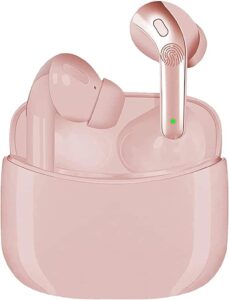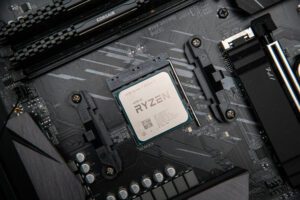A laptop typically uses between 45 to 65 watts while charging. Charging wattage can vary depending on the size and age of the laptop, as well as the type of charger being used.
Laptops have become essential devices for most people, especially professionals and students who use them for work or school. In order to keep them running efficiently, charging is vital. However, it’s crucial to know how much power they consume while charging.
Generally, a laptop uses between 45 to 65 watts while charging, though this can vary based on factors such as age, size, and charger type. In this article, we’ll explore everything you need to know about how many watts a laptop uses when charging, including tips for reducing power consumption and prolonging your device’s battery life.
Understanding Laptop Charging Wattage
Have you ever wondered how many watts your laptop draws when charging? Well, this guide has got you covered. Here, we will walk you through everything you need to know about charging wattage for laptops. Let’s begin!
Explanation Of The Different Charging Wattages For Laptops
Laptop charging wattages can range from 30w to 100w, depending on the laptop model. High-end laptops tend to have higher charging wattages compared to entry-level laptops.
Factors That Affect The Charging Wattage
Various factors affect how much wattage a laptop draws when charging. Some of these factors include:
- Laptop model
- Battery capacity
- Processor speed and power consumption
- Screen size and resolution
- Operating system
Discussion Of Battery Capacity And Its Relation To Charging Wattage
Battery capacity refers to the amount of energy a battery can store. The higher the battery capacity, the longer it will take to charge fully. For instance, a laptop with a 60wh battery will take longer to charge than a laptop with a 40wh battery, assuming they have the same charging wattage.
Comparison Of Charging Wattage For Different Laptop Brands And Models
Different laptop brands and models have varying charging wattages. For example, a dell xps 13 has a charging wattage of 45w, while the lenovo thinkpad x1 carbon has a charging wattage of 65w. It is essential to check the charging wattage of your laptop, as using the wrong charger could damage your battery.
How To Find Out The Charging Wattage Of Your Laptop
To find out the charging wattage of your laptop, check the power supply’s specifications. Most laptop power supplies indicate the charging wattage on the label. Alternatively, you can check your laptop’s manual or do a quick online search.
Understanding laptop charging wattage is crucial for maintaining your laptop’s battery health. By knowing your laptop’s charging wattage, you can make informed decisions when selecting a replacement charger or using your laptop while charging.
How To Calculate Power Consumption During Laptop Charging
Explanation Of How To Calculate Power Consumption
Calculating power consumption during laptop charging is crucial for energy efficiency. Follow these simple steps to determine your laptop’s power usage:
- Identify your laptop charger’s wattage. Check the label or documentation for this information.
- Determine how many hours your laptop will be charging. Let’s say you plan to charge it for 2 hours.
- Multiply the laptop charger’s wattage by the number of hours it will be charging. For example, if your laptop charger is 65 watts and you plan to charge it for 2 hours, the power consumption would be 130 watt-hours (65 watts x 2 hours).
Importance Of Knowing The Power Consumption For Tracking Energy Usage
Knowing your laptop’s power consumption allows you to track your energy usage and estimate your electricity bills. By monitoring your power consumption, you can also make informed decisions about cutting down your energy usage and saving money.
Factors That Affect Power Consumption During Laptop Charging
Several factors can impact the power consumption during laptop charging, such as:
- Battery size and age
- Laptop model and specifications
- Charging method (e.g., wall socket or usb port)
- Environmental temperature
Comparison Of Different Power Consumption Levels For Laptops
Power consumption levels can vary among laptop models and manufacturers. Generally, a laptop charging consumes between 45 to 65 watts per hour. However, some laptops can use up to 95 watts per hour when charging.
Here’s a quick overview of the power consumption levels for different laptop sizes:
- 11 to 12 inches: 20 to 45 watts per hour
- 13 to 16 inches: 45 to 65 watts per hour
- 17 to 18 inches: 65 to 95 watts per hour
How To Use A Power Meter To Monitor Energy Usage
To monitor your laptop’s energy usage, you can use a power meter, a small device that plugs between the power outlet and the laptop charger. A power meter will display the power consumption in real-time, allowing you to track it accurately.
Follow these simple steps to use a power meter:
- Plug the power meter into the wall socket.
- Connect the laptop charger to the power meter.
- Turn on the laptop and start charging.
- Monitor the power meter’s display.
By following these tips, you can calculate and monitor your laptop’s power consumption, promote energy efficiency, and save money on your energy bills.
Tips To Reduce Your Laptop Charging Wattage
When it comes to laptop charging, it’s safe to say that it can be quite frustrating when your device has a short battery lifespan. A common question many people ask is, ‘how many watts does a laptop use when charging?
‘ The answer may surprise you. On average, most laptops use between 45 and 65 watts when charging. While it may not sound like a lot, it does add up over time. If you’re looking to reduce your laptop charging wattage, not only will you be doing your part in conserving energy, but you’ll also save on your electricity bill.
Here are a few tips to consider.
Explanation Of The Impact Of Reducing Power Usage On Sustainability And Cost Savings
Reducing power usage when charging your laptop has a significant impact on both sustainability and cost savings. Here are two reasons why:
- Sustainability: By conserving energy, you’re doing your part in reducing the amount of carbon emissions that are emitted into the atmosphere. Every small step counts in ensuring a better future for the planet.
- Cost savings: Did you know that the energy used to charge your laptop accounts for around 10% of your monthly electricity bill? By reducing your laptop charging wattage, you’ll be saving not only on energy but also on your electricity bill each month.
Tips For Reducing Laptop Charging Wattage
Below are some tips for reducing your laptop charging wattage:
- Adjust power settings: Most laptops come with a ‘power saver’ mode that reduces energy usage. Make sure to adjust the power settings to ‘power saver’ mode, especially when your laptop is plugged in.
- Use energy-saving tools: There are various energy-saving tools available that can help you reduce your laptop charging wattage. Consider using tools such as batterybar, which gives you real-time information on your laptop’s battery usage and life.
- Unplug external devices: When charging your laptop, make sure to unplug any external devices such as a mouse, keyboard, or phone. These external devices consume extra energy and can significantly increase your laptop charging wattage.
How To Optimize Battery Usage
Optimizing your battery usage will not only help reduce your laptop charging wattage but also extend the lifespan of your laptop battery. Here are some tips to optimize your battery usage:
- Adjust screen brightness: Lowering your screen brightness will reduce energy usage and increase your battery lifespan.
- Turn off wi-fi and bluetooth: When not in use, turn off wi-fi and bluetooth, as they consume energy even when you’re not using them.
- Close unnecessary programs: Running unnecessary programs can drain your laptop’s battery. Make sure to close any programs not in use.
By implementing these tips, you’ll not only reduce your laptop charging wattage but also save on your electricity bill and do your part in conserving energy.
Understanding The Impact Of Laptop Charging On Your Energy Bill
Explanation Of How Charging Laptops Can Impact Your Energy Bill
When it comes to understanding energy consumption, knowing the amount of energy that is consumed by your laptop can have a significant impact on your energy bill. Your laptop uses three types of power: ac adapter, battery, and battery charger.
The power usage can vary depending on the laptop model.
There are two main factors that can affect the energy consumption of your laptop while charging:
- The capacity of the battery
- The type of charging adapter used
Discussion Of The Cost Savings Associated With Reducing Power Consumption During Charging
Reducing power consumption when charging your laptop can help you save money on your energy bills. Here are some ways you can minimize energy consumption while charging your laptop:
- Use an energy-efficient charger
- Select a charger with a lower power rating
- Avoid charging your laptop overnight
- Remove your laptop’s battery while it is charging
- Shut down your laptop while charging
- Remove any connected peripherals that are not in use
By employing these strategies, you can significantly reduce your energy consumption and save money on your energy bills.
Comparison Of Energy Usage And Cost Between Different Laptop Models And Charging Practices
Different laptops consume different amounts of energy. Some laptops require more power than others, while some laptops are optimized for energy efficiency. Here is a comparison of energy consumption between different laptop models:
- Apple macbook air: 45 watts
- Dell xps 13: 45 watts
- Hp spectre x360: 45 watts
- Lenovo thinkpad x1 carbon: 65 watts
The cost of energy consumption when charging your laptop varies depending on the amount of power consumed and your energy provider’s tariff. Based on the average estimate, charging your laptop for one hour using a 60-watt power adapter consumes approximately 0.
06-kilowatt hours of electricity, which is equivalent to $0. 01.
Strategies For Reducing Energy Usage And Cutting Costs
There are several strategies for reducing energy usage while charging your laptop, including:
- Dimming your laptop screen
- Closing non-essential apps and programs
- Putting your laptop on sleep mode when not in use
- Avoiding overcharging your laptop battery
- Replacing your laptop battery when it is no longer holding a charge
By putting these strategies into practice, you can reduce energy consumption and cut down on your energy bills while charging your laptop.
Frequently Asked Questions On How Many Watts Does A Laptop Use When Charging
How Much Power Does A Laptop Use While Charging?
Laptop power consumption while charging varies from 50 to 100 watts, depending on the laptop type and battery.
Is It Safe To Use The Laptop While Charging?
Yes, it is safe to use a laptop while charging, as long as you use the right charger and ventilation system.
Does Charging A Laptop Overnight Damage The Battery?
Leaving a laptop plugged in overnight can damage the battery, affecting its durability and performance in the long run.
Conclusion
After exploring the topic of how many watts does a laptop use when charging, we can come to a few conclusions. Firstly, the amount of watts used depends on the laptop’s model and battery capacity, as well as the charger’s wattage.
Secondly, it is important to note that leaving your laptop plugged in for extended periods of time can put unnecessary strain on the battery, potentially reducing its lifespan. Finally, investing in a high-quality charger that matches your laptop’s recommended wattage can not only improve its charging time but also extend the life of your battery and save you money in the long run.
As technology continues to advance, it’s important to stay informed about energy consumption and how it affects our planet. By being conscious of our energy usage, we can all make a small impact on preserving the environment for future generations.



